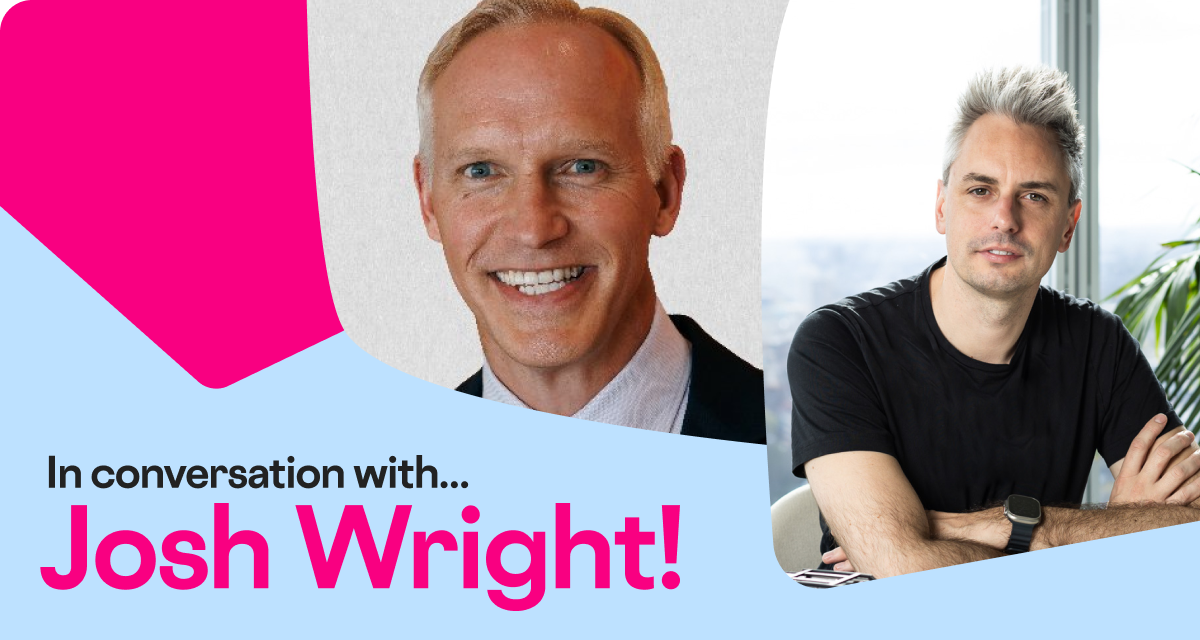- 🗞 News
- Last updated: Apr 2, 2025
- 6 Min Read
In Conversation With... Josh Wright
Written by

Verified by


See how much you can borrow in 60 seconds
| Representative Example | |
|---|---|
| Loan amount | £10,000 |
| Interest rate | 13.9% APR |
| 54 payments of | £246 |
| Total cost of credit | £3,284 |
| Option to purchase fee | £1 |
| Total payable | £13,285 |
We're big fans of behavioural science – not just as a concept, but as a practical tool to help people make better financial decisions. So, when we had the chance to speak with Josh Wright, Fellow at Princeton University's Kahneman-Treisman Center for Behavioral Science and Public Policy, and one of the leading voices in applied behavioural science, we jumped at it.
Josh’s CV is one of those that makes you sit up straighter, with a career that spans government, startups, nonprofits, and the corporate world. As Aidan put it at the start of the session: “We could have chatted for hours.” (Spoiler: we almost did.)
Here are just a few of the highlights from a conversation that blended fascinating case studies, timeless psychological insights, and practical tips that have us even more excited about the power of behavioural science.
Context is everything 🏙️
Josh kicked off with a story from WWII – a B17 bomber repeatedly crashing due to a simple yet costly design flaw. The fix? Making two similar levers feel different to the touch. It’s a lesson in how the context in which we make decisions shapes outcomes more than we realise.
Most people, Josh explained, think decisions are 70% down to the individual and 30% down to the situation. In reality, it’s the opposite.
That’s a game-changer. “If you want to change behaviour,” Josh said, “change the context.” In product design, marketing, customer service – context can be everything from a website layout to the phrasing of a single sentence.
Spock, Homer, or Brad Pitt? 🖖🍩🤵♂️
Another standout moment was Josh’s take on how we perceive human behaviour – and the flawed assumptions we often make. Too often, we either design for hyper-rational beings (hello, Spock) or for irrational, hopelessly flawed humans (looking at you, Homer Simpson).
The truth, Josh says, is somewhere in between. Humans are incredibly capable – we do things every day that machines still struggle with – but we’re also fallible. We forget things. We respond emotionally. We’re influenced by timing, wording, and even the weather.
Josh’s advice? Design for Brad Pitt. Not the Hollywood looks – but the human who’s both smart and a little odd. Because that’s most of us.
The power of perception 👀
One of the most powerful takeaways was about how people construe the world – in other words, how we interpret and perceive what’s in front of us. This isn’t just semantics. It’s the difference between building products people use and ones they abandon.
A prime example? Showing someone the brand of car they drive before asking how they feel about it makes them feel better about the experience. Why? Because identity and priming matter. As Josh put it when explaining why results can vary so much based on how a question is introduced: “These are the same people – but in one version, they’re reminded they drive a BMW. In the other, they’re not.”
Practical magic (and real results) 🪄🎩
Josh and the teams he’s worked with have helped millions of people with subtle but powerful interventions. Take the challenge of encouraging more people in Mexico to contribute to their retirement funds. A new form design helped. But the biggest win? Asking people to imagine their future selves. This simple, story-based intervention led to a 20x increase in sign-ups for automatic savings.
In another experiment, aging photos of people to show their future selves led to a 13% increase in on-the-spot contributions.
The takeaway? Behavioural science isn't about trickery. It’s about helping people make decisions they’ll feel good about later.
Bringing behavioural thinking into the business 🧠
Amy, our co-founder and director of product and operations (and behavioural science superfan), asked how to embed this thinking more widely across a company – not just in product teams.
Josh’s advice was to start small. Empower passionate people across different departments to explore and experiment – even if it’s “off the side of their desks.” And get some early wins. “Once people see the sauce,” he said, “it catches hold.”
And if your leadership is already on board (which we’re fortunate is the case at Carmoola), that’s half the battle won.
Why aren’t more companies doing this? 🤔
Given how effective behavioural design can be, why don’t more companies use it?
Josh was candid: legacy thinking, a strong cultural bias toward the rational actor model, and good old-fashioned status quo bias.
But that’s what makes it an opportunity. “It’s a market inefficiency,” he said. “Use it.”
Final nuggets: self-design, sugar, and soggy sponges 🍭
The Q&A was a masterclass in its own right – from the psychological value of default vacation policies (spoiler: unlimited leave isn't always the best idea) to the cognitive benefit of just putting your gym shoes on.
Josh even revealed that yes, even a behavioural scientist’s own life can be a “leaky house.” But knowing your own biases, and designing around them, can be hugely powerful – whether it’s building a home gym or cutting out sugar by going cold turkey.
Designing the human experience 🧬
We ended by asking Josh about his upcoming book, Designing the Human Experience, set to launch in early 2026. Its central argument? We often overinvest in technical solutions and underinvest in human ones – at great cost.\
We’re already counting down the months until this sure to be must-read is published.
What we’re taking forward 🎓
We’re proud to be building a business that’s grounded in helping customers make smart, confident choices. Behavioural science isn’t just a toolkit; it’s a mindset. One that’s embedded in our product, our marketing, our conversations with customers – and, increasingly, our company culture.
Thanks again to Josh for such an inspiring and mind-expanding session. We’re looking forward to putting even more of these insights into action.
For more in our 'In conversation with...' series, check out our talks with Nigel Morris, Matthew Dicks, Kevin Ryan, and Deepak Goyal.
See how much you can borrow in 60 seconds
| Representative Example | |
|---|---|
| Loan amount | £10,000 |
| Interest rate | 13.9% APR |
| 54 payments of | £246 |
| Total cost of credit | £3,284 |
| Option to purchase fee | £1 |
| Total payable | £13,285 |
Related articles
Can you drive in the UK on a foreign licence?
If you’re new to the UK, you might be keen to get behind the wheel to explore on the open road. You can usually drive in the UK...
What happens if my car is written off and it’s still on finance?
Accidents happen. When split-second decisions and challenging conditions make driving difficult at the best of times, even the...
Which credit reference agencies do lenders use?
When applying for car finance, your credit score can make a significant difference to the APR you’re offered, your repayment...

.webp?width=832&height=592&name=customer-support%20(1).webp)










.webp?width=400&height=285&name=online-shoppers-with-dog%20(1).webp)


.jpg?width=500&height=356&name=Vintage%20car%20going%20to%20an%20old%20town-1%20(1).jpg)





